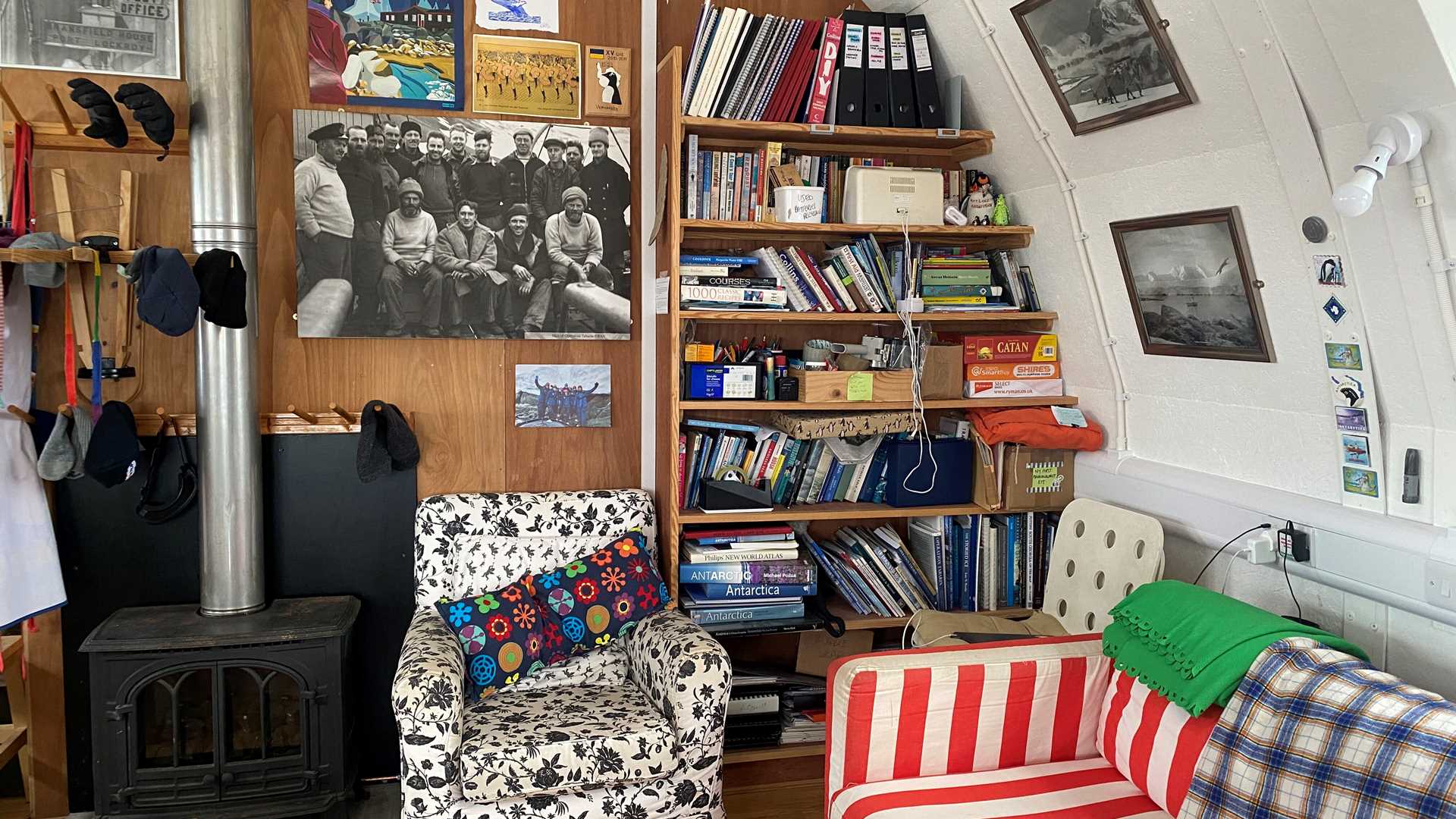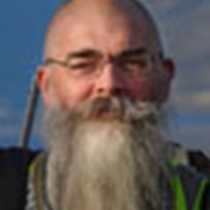We had perfect conditions for our operations today. Expedition leader Mike’s early morning call awoke us to a glorious day with blue skies, mirror calm waters, and fog rolling over the high mountains of Anvers Island as we tracked southwards through the Neumayer Channel toward Port Lockroy. Discovered by French explorer Jean Baptiste Charcot at the beginning of the 20th century, this sheltered bay is formed by Wienke Island and is home to a small group of islands. Boogie and Woogie Islands form reefs to the northern part of the bay, while our destination was a slightly larger rock, Goudier Island.
Antennae and huts gradually became visible as we slowly cruised over breakfast. The huts date from the early 1940s when a secret British mission was sent to occupy two strategic sites in Antarctica. Their aim was to build British sovereignty in the face of German and Argentinean activity. To be frank, the few men that were sent were scientists, not fighters. They were not equipped to forcefully defend the flag. Britain had claimed the Antarctic Peninsula and the Sub-Antarctic Islands in 1908, but they had not formed any kind of coherent policy or research to back up this claim. During the war, this became painfully obvious, and so the more recent era of late and post war British activity began. The site at Port Lockroy focused its research on upper atmospheric radio communication and was pivotal in assisting communication beyond line of sight, using the ionosphere to bounce radio signals back to Earth at great distances.
The United Kingdom Antarctic Heritage Trust has looked after the site since 2006. Abandoned for many years, the hut has been lovingly restored to its heyday, and we had an opportunity to peek inside. A post office was established here in 1944. It has been restored and sells British Antarctic Territory stamps along with t-shirts, maps, and postcards (although they had just sold out today). After a briefing by the heritage team, we enjoyed our landing in relaxed and calm weather conditions. It is satisfying to observe how conservation teams cope with the challenges of looking after these rather delicate buildings that tell the story of the continent’s precious history. I lived there once, and my old bunk bed has been restored, complete with vintage sleeping gear and clothing. Much tidier than when three of us lived there, the hut now meets the needs of explorers and guests alike.
We relocated just a short distance over lunch and sailed back up the Neumayer Channel into Borgen Bay for a beautiful, tranquil Zodiac cruise…until the glacier calved and sent a vigorous wave across the water, that is. This place is changing rapidly, and we had the chance during our trip to see how crucial it is for all of us to be ambassadors for the continent. We need to give her a voice and share how special she is so that future generations can see her and marvel over these unique sites.







